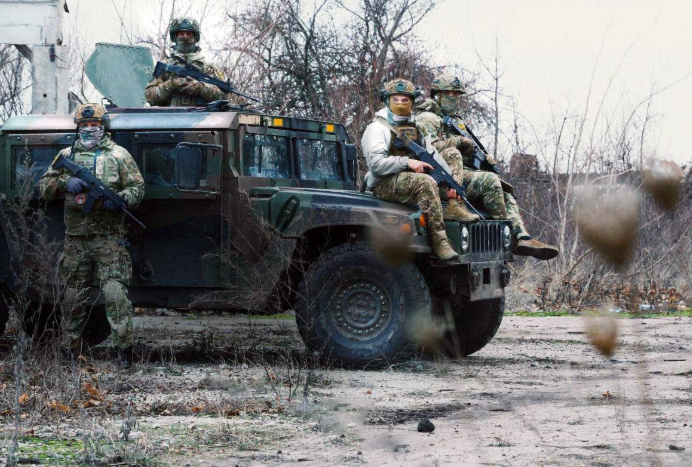
In recent days, Russian forces have increased pressure on the urban center of Pokrovsk, deploying a growing number of small DRG (reconnaissance and sabotage) groups. This is occurring under favorable conditions for Russian operations, as poor weather and low visibility have reduced the effectiveness of drones, while Ukrainian forces suffer from manpower shortages and a logistical crisis that has persisted for months. Despite this, Russian troops have failed to consolidate their positions in the city. Ukrainian units — including Special Forces — continue to operate inside Pokrovsk. A similar situation is unfolding in Myrnohrad, about 5 km east of Pokrovsk, where Russian troops have reached the eastern outskirts and are beginning to push into the city from the east.

To understand how this situation developed, it is necessary to look back at the previous months. After a stalemate in spring, new Russian advances were recorded between July and August in the Donetsk area, particularly along the Pokrovsk axis, which became the main hotspot of the conflict during the summer. After a relatively static September, the front began shifting rapidly again in October.
Between July and August 2025, in the area east of Pokrovsk, Russian forces launched a major offensive, breaking through Ukrainian defenses on several fronts and advancing toward Dobropillya and Myrnohrad. Russian sabotage groups infiltrated numerous villages, disrupting Ukrainian logistics. In August, Pokrovsk was among the most intense sectors of the entire frontline. Ukraine responded by redeploying elite units, launching effective counterattacks that partially pushed back the Russian assault and regained several positions. However, the Russians managed to hold on to key terrain, especially northeast of Pokrovsk.
Between late August and early September, Russian troops advanced north of Hrodivka, reaching positions just over 10 km southeast of Pokrovsk. At the same time, Russia redeployed armored formations from Sumy and Kherson to the Pokrovsk sector, amassing armored vehicles despite heavy losses and logistical constraints.
By early September, Ukrainian forces had stabilized the line south of Mykholaivka and launched an attack on Myrne. Meanwhile, Russian DRG groups operating from Zvirove and Leontovychy, a few kilometers from Pokrovsk, attempted several infiltrations across Ukrainian lines.
During mid-to-late September, Russian units fortified positions at Zvirove and Leontovychy, using them as staging grounds for new incursions toward Troyanda and Shakhtarsky, villages on the southern approaches to Pokrovsk.
In early October, the Russian Army regained momentum, conducting intense assaults toward Dobropillya and the northeastern flank of Pokrovsk, particularly after 12 October. Northeast of Pokrovsk, Russian forces launched an operation to recapture the tactical heights southeast of Volodymyrivka, previously retaken by the Ukrainians. Russian troops advanced along a ravine and the southern shore of the Staryy reservoir, seizing tree lines and clearing the northern road to Novotoretske, forcing Ukrainian forces to withdraw into Volodymyrivka.
At Poltavka, about 7 km east of Volodymyrivka, Russian forces pushed back Ukrainian units, capturing a gypsum quarry and surrounding positions, then advanced toward the eastern shore of the Staryy reservoir. On 12 October, under fog and rain cover, two Russian mechanized columns (tanks and IFVs) advanced on Volodymyrivka. The first approached from the south, reaching the southern edge of the village — despite losses from Ukrainian FPV drones, over 50 Russian troops landed and dispersed, starting clearing operations in southern Volodymyrivka. The village, however, remains partly under Ukrainian control. The second column advanced from Poltavka toward Volodymyrivka’s rear, securing wooded areas to the east and pushing Ukrainian forces back to Shakhove, less than 1 km north.
On 13 October, Russian troops captured Dorozhnje, advancing toward Dobropillya (the area has since been retaken by Ukraine). By 15 October, Russian forces had consolidated positions at the westernmost edge of the forests north of the Novyy reservoir, seizing two tree lines and a key position controlling access to Shakhove. Ukrainian troops responded with FPV drones and artillery, inflicting significant losses on the first Russian assault groups.
On 20 October, in the western section of the Kucheriv Yar salient, Russian forces regained the initiative around Nove Shakhove, entering the village and taking most of it under control, while also launching attacks on Vilne from the northeast.
Further south, the Russian Army gained control of large areas north of Rodynske and in western Chervonyi Lyman, supported by FAB glide bomb strikes and heavy artillery. Ukrainian troops counterattacked on the flanks, keeping Rodynske under control.
Roughly 5 km from Rodynske, Russian forces continued their push toward Myrnohrad from the east, consolidating southern Novoekonomichne and advancing on Balahan, which they captured on 20 October before being driven out again by Ukrainian forces.

Overall, the situation for Ukrainian forces is deteriorating. The shortage of personnel and the loss of key positions southwest and northeast of Pokrovsk suggest an imminent worsening, with the risk of losing one of the last access routes to the city. The situation is even more critical in Myrnohrad, where Russian DRG units are entering the city from the east, and likely soon from the north as well.








.png)
